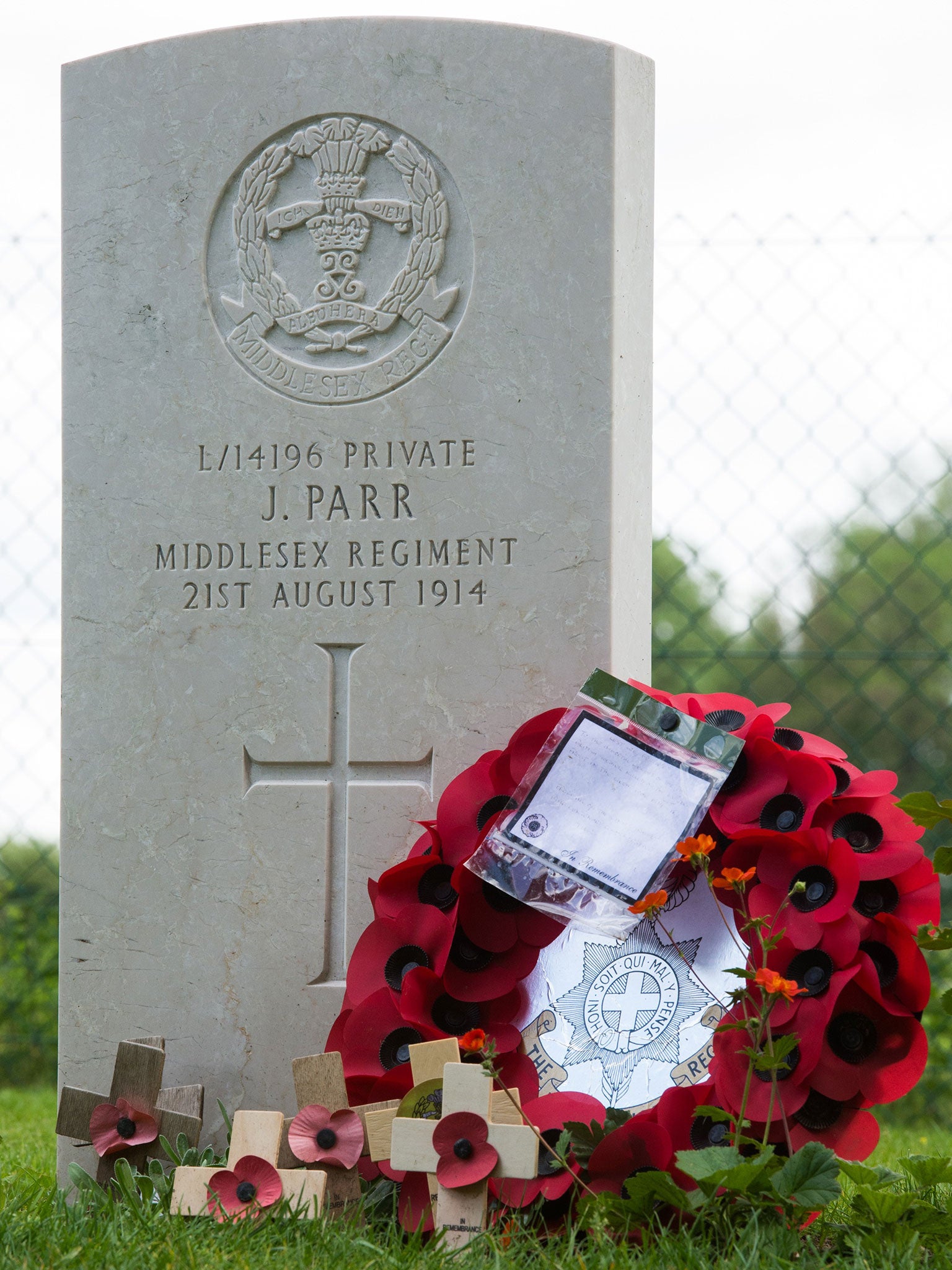First World War Centenary: Could this be the most moving ceremony of all?
Both German and British dead lie in the Saint Symphorien cemetery in southern Belgium

Of all the ceremonies to mark the centenary of Britain’s entry into the First World War, the most moving may be at the end of a suburban cul-de-sac in southern Belgium.
The Duke and Duchess of Cambridge, Prince Harry, the King of the Belgians, and the German and Irish presidents will attend a twilight ceremony of Anglo-German “reconciliation” at the Saint Symphorien cemetery on the outskirts of Mons.
The cemetery is an excellent choice – doubly so. Of all the 2,000 British First World War cemeteries in France and Belgium, Saint Symphorien is the only one to contain roughly equal numbers of British Commonwealth and German graves. Many of the soldiers buried here are Irish, including the war’s first winner of a posthumous VC. Hence the presence of President Michael D Higgins.
Second, the people buried in the Saint Symphorien cemetery, though a relatively small number, straddle the four years of the mass slaughter.
In graves facing each other across a grassy path, there are the first and last British soldiers to be killed in the 1914-18 war. The two graves are separated physically by seven paces and, metaphorically, by 886,000 dead British servicemen.
The fact that they were buried so close together is a macabre coincidence. Their status as the “first and last” British casualties had not yet been recognised when the cemetery – originally German – was taken over and reorganised by the then Imperial War Graves Commission in the 1920s.
Their proximity also reflects the fact that, for the British Army, the war on the Western Front ended where it began.
Private John Parr, 16, from Finchley, a bicycle scout, had lied about his age when he joined the regular army the previous year. He was shot by advancing German troops, as he patrolled ahead of the British Expeditionary Force on 22 August 1914. The next day the two armies fought their first battle in and around Mons
Private George Ellison, 40, from Leeds, was shot by a sniper on 11 November 1918 – Armistice Day – while part of a patrol scouting ahead of the advancing British Army two miles from where he is now buried. He had also fought at Mons with the BEF in 1914. He survived many other terrible battles only to die 90 minutes before the guns fell silent.
There were still later casualties among the Canadians who were fighting a little to the west. Private George Lawrence Price, 25, of the 6th Canadian Infantry Brigade, was shot through the head at 10.57am, three minutes before the war ended. Price, the last British empire soldier to die in combat in the First World War, is also buried at Saint Symphorien, 30 yards from privates Parr and Ellison.
Many of the “British” graves from August 1914 are those of Irish soldiers serving with British or Irish regiments in the small British force which had hurriedly been dispatched to France. They include the grave of Lieutenant Maurice Dease VC, of the Royal Fusiliers, who died on 23 August 1914, aged 24. Lt Dease, from Coole, County Westmeath, was one of the first British officers to die in the war and the first posthumous recipient of a Victoria Cross.
The Saint Symphorien cemetery, on the edge of the northern suburbs of Mons, is unlike any other First World War cemetery. It takes the form of a a spiral, built on mounds of spoil excavated from phosphate mines in the 19th century. The land was given by its Belgian owner to the German army in 1914 on condition that both British and German soldiers were buried there.
After the war, it was taken over by the British and planted with pine trees, cotoneasters, flower-beds and lawns.
There are 229 Commonwealth and 284 German servicemen buried or commemorated at Saint Symphorien, of whom 105 remain unidentified. The twin summits of the spiral are crowned by a German obelisk, dedicated in 1914 to the casuaties of both sides, and by a “Cross of Sacrifice”, the sword superimposed on a crucifix which is found in all British war cemeteries.
Because the site is relatively cramped, Monday night’s ceremony has been restricted to 500 invited guests. It will be screened by the BBC and by Belgian TV. The Duke and Duchess of Cambridge and Prince Harry will join King Philippe of the Belgians, President Joachim Gauck of Germany and the Irish President, Michael D Higgins.
King Philippe, William and Kate and President Gauck will also attend a ceremony in Liège earlier in the day. This will mark the German invasion of Belgium on 4 August 1914 which started the hostilities on the Western Front.
The ceremony at Saint Symphorien will be narrated by the British historian Dan Snow. There will be readings from British and German soldiers’ letters, recitals by a children’s choir conducted by Gareth Malone and the first performance of piece commission from the composer Howard Goodall.
Join our commenting forum
Join thought-provoking conversations, follow other Independent readers and see their replies
Comments